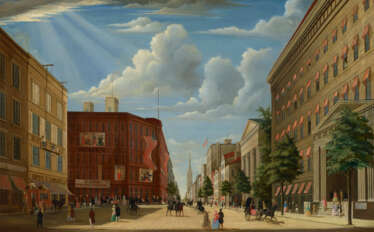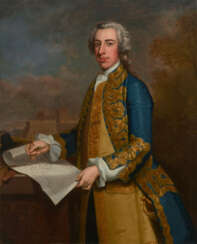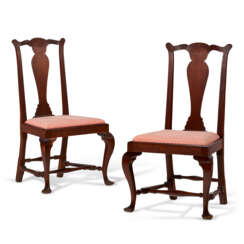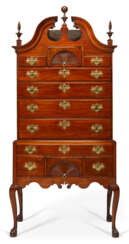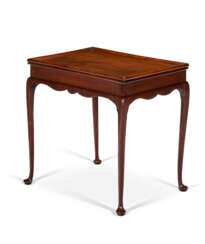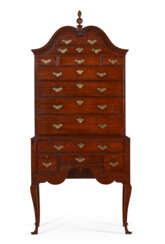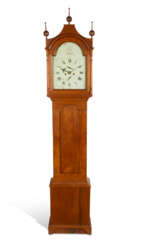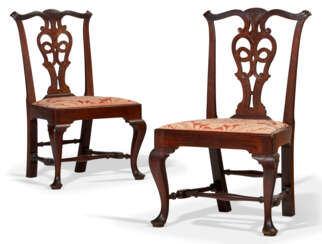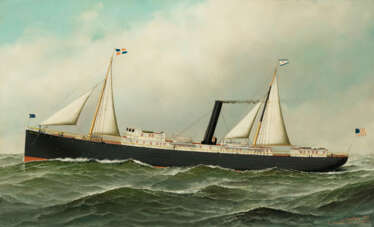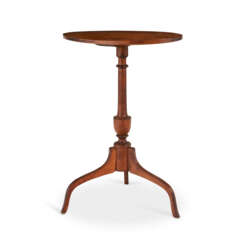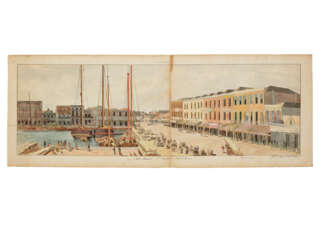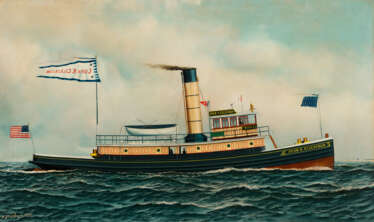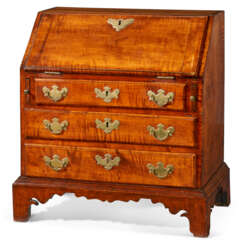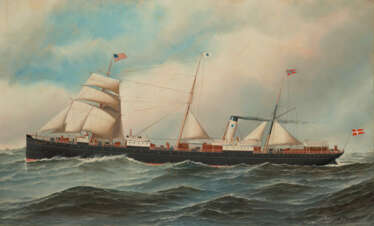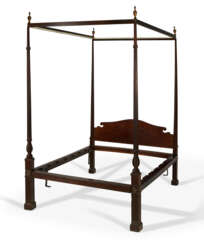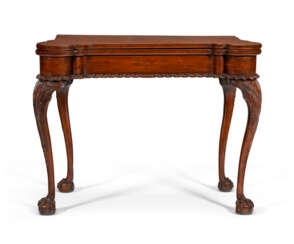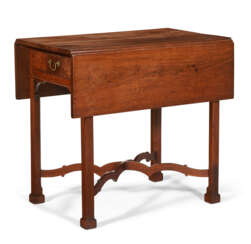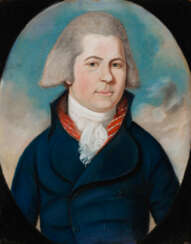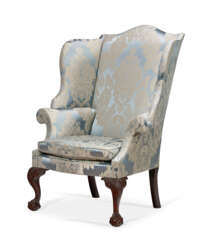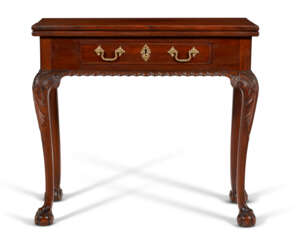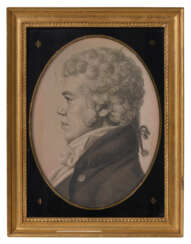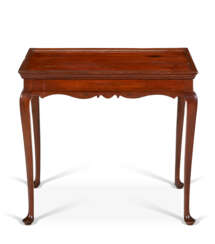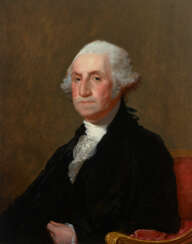
Important Americana
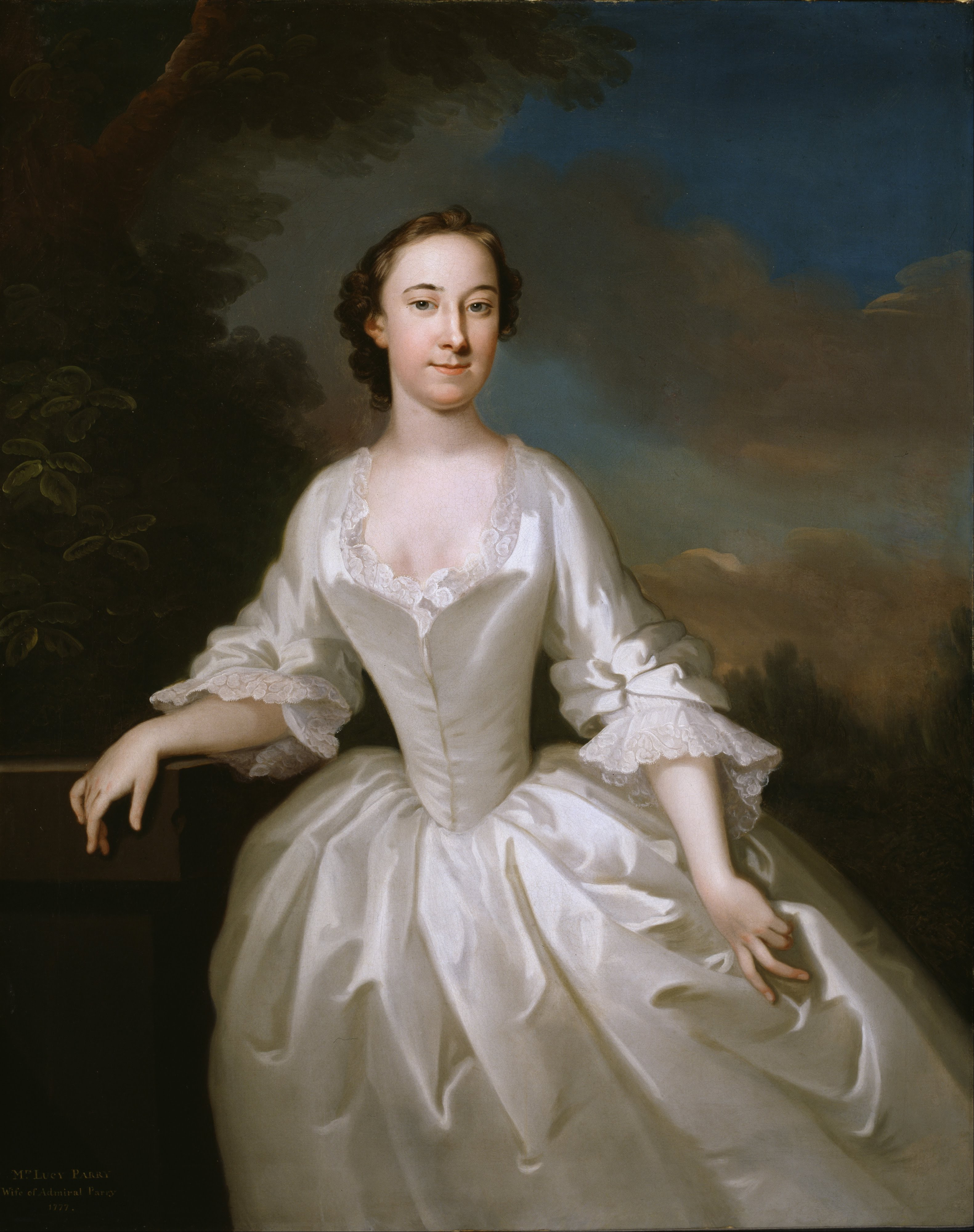
John Wollaston was an English painter of portraits who was active in the British colonies in North America for much of his career. He was one of a handful of painters to introduce the English Rococo style to the American colonies.
His portraits feature rich depictions of fabrics and elegant poses, and his subjects are smiling and oval-eyed; many of his poses seem to be drawn from engravings. Some of his later New York portraits feature a landscape background; most focus on careful depiction of the sitters' apparel, which serves as a conspicuous symbol of their class. His treatment of the subjects' eyes in particular is considered somewhat peculiar, and serves to identify even his unsigned portraits.
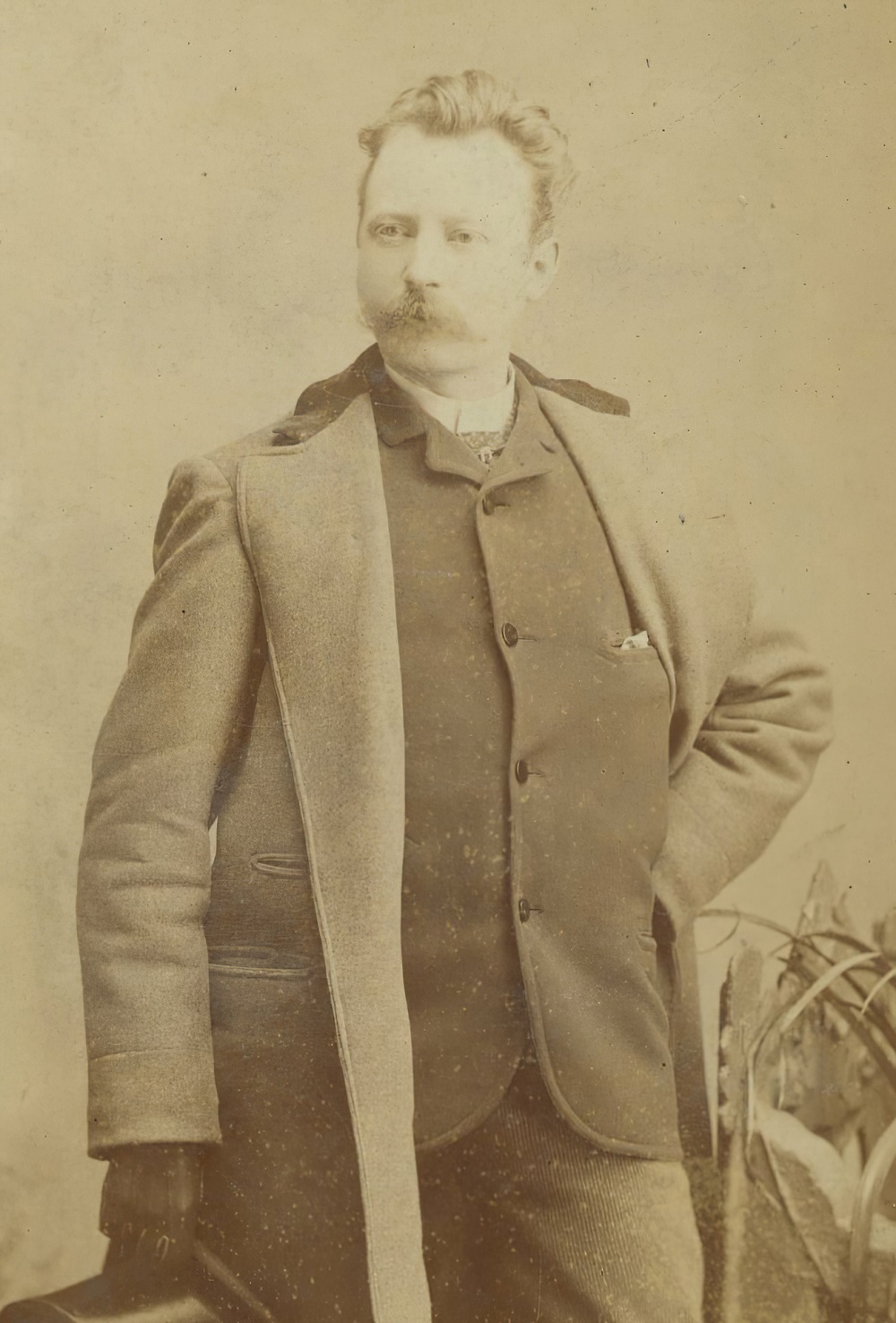
Antonio Nicolo Gasparo Jacobsen was a Danish-born American maritime artist known as the "Audubon of Steam Vessels".
The public rooms of The Griswold Inn in Essex, Connecticut, the oldest continuously run tavern in the United States, features the largest privately held collection of Jacobsen's paintings.

Antonio Nicolo Gasparo Jacobsen was a Danish-born American maritime artist known as the "Audubon of Steam Vessels".
The public rooms of The Griswold Inn in Essex, Connecticut, the oldest continuously run tavern in the United States, features the largest privately held collection of Jacobsen's paintings.

Antonio Nicolo Gasparo Jacobsen was a Danish-born American maritime artist known as the "Audubon of Steam Vessels".
The public rooms of The Griswold Inn in Essex, Connecticut, the oldest continuously run tavern in the United States, features the largest privately held collection of Jacobsen's paintings.

Antonio Nicolo Gasparo Jacobsen was a Danish-born American maritime artist known as the "Audubon of Steam Vessels".
The public rooms of The Griswold Inn in Essex, Connecticut, the oldest continuously run tavern in the United States, features the largest privately held collection of Jacobsen's paintings.
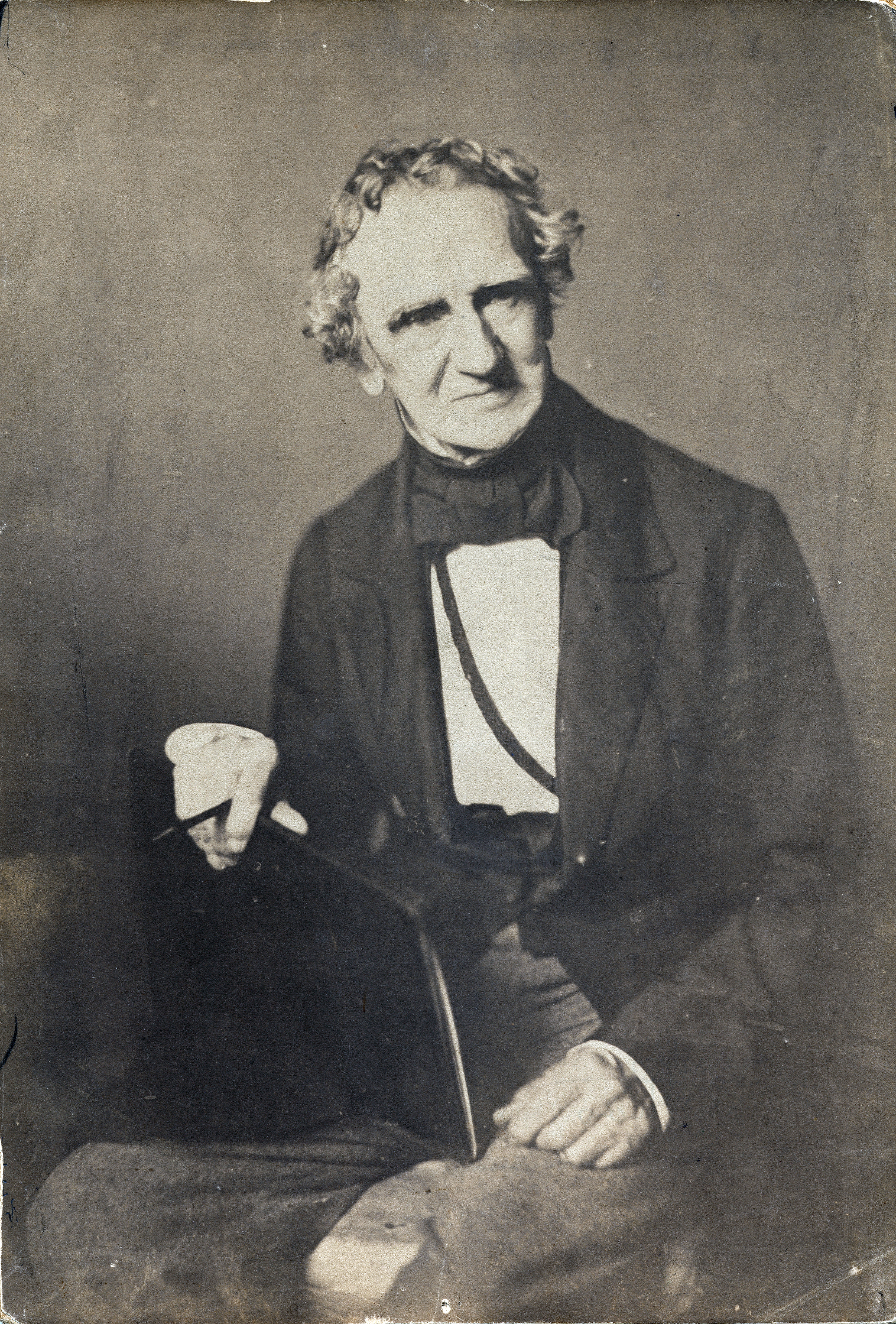
Thomas Sully was a portrait painter in the United States. Born in Great Britain, he lived most of his life in Philadelphia, Pennsylvania. He painted in the style of Thomas Lawrence. His subjects included national political leaders such as United States presidents: Thomas Jefferson, John Quincy Adams, and Andrew Jackson, Revolutionary War hero General Marquis de Lafayette, and many leading musicians and composers. In addition to portraits of wealthy patrons, he painted landscapes and historical pieces such as the 1819 The Passage of the Delaware. His work was adapted for use on United States coinage.
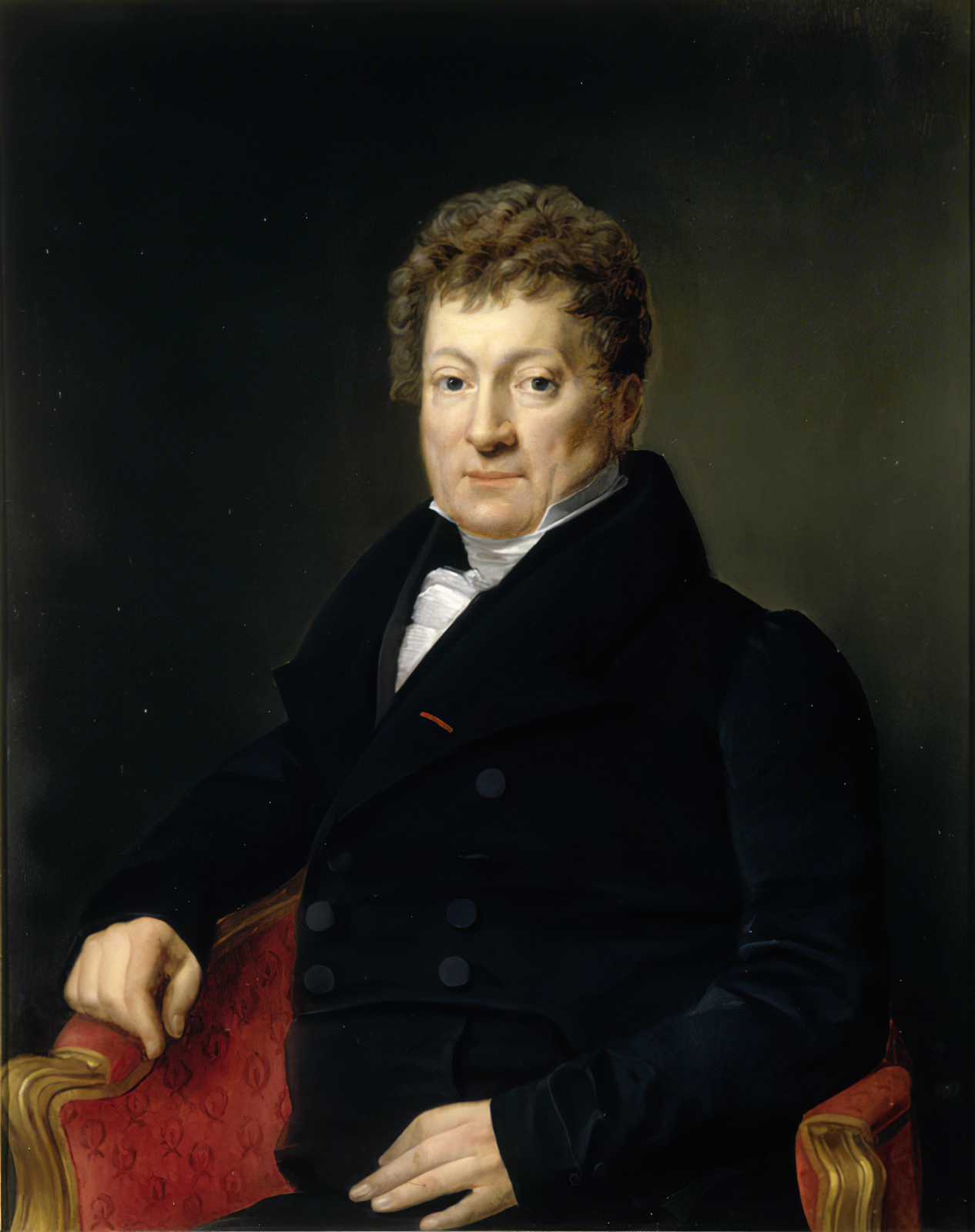
Charles Balthazar Julien Févret de Saint-Memin was a distinguished French portrait artist, celebrated for his intricate and lifelike chalk drawings and engravings. Born in Dijon, France, in 1770, he found refuge in the United States during the tumultuous years of the French Revolution. Between 1798 and 1814, Saint-Memin created over a thousand portraits of notable American figures, utilizing a unique physiognotrace device to capture the essence of his subjects with remarkable accuracy.
After returning to France in 1814, he became the director of the Musée des Beaux-Arts de Dijon, where he served until his death in 1852. His works, which include profiles of figures such as Thomas Jefferson and Meriwether Lewis, provide a fascinating glimpse into the faces that shaped early American history and are preserved in institutions like the Smithsonian and the Library of Congress.
For collectors and art history enthusiasts, Saint-Memin's oeuvre offers a unique perspective on American portraiture and the artistic exchange between France and the United States during a pivotal era. His contributions to art continue to be studied and appreciated for their historical value and artistic merit.
To stay informed about developments and events related to Charles Balthazar Julien Févret de Saint-Memin and his works, consider subscribing for updates. This subscription will keep you updated on new discoveries, exhibitions, and auction events featuring his works, ensuring you remain connected to the legacy of this remarkable artist.
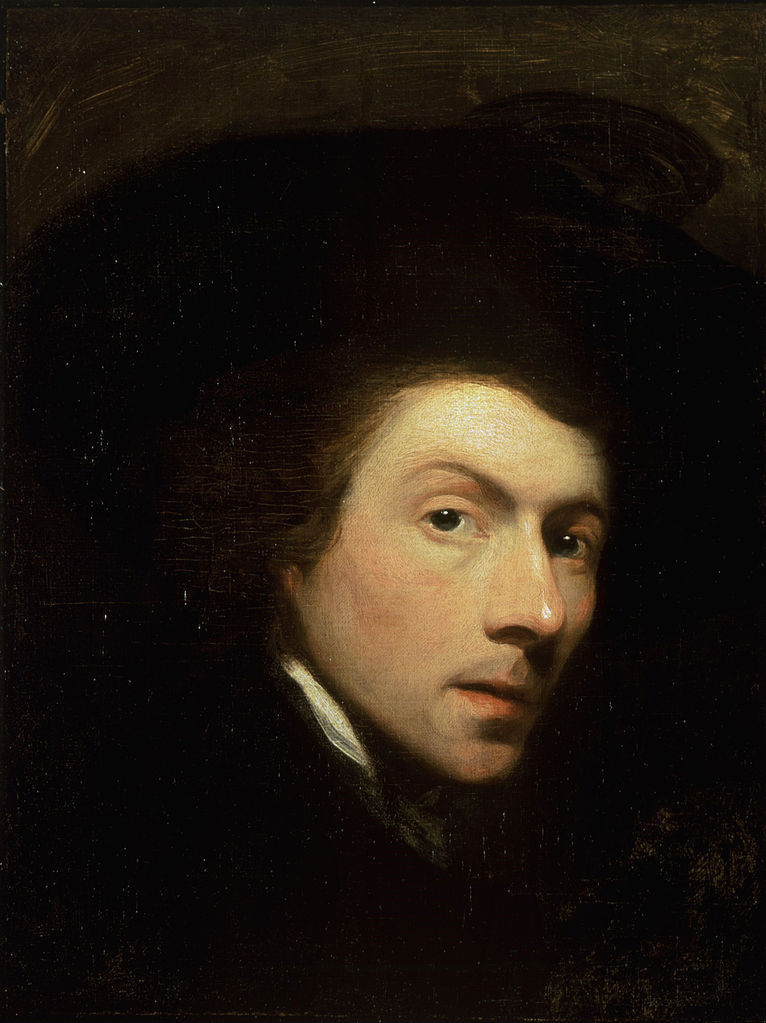
Gilbert Charles Stuart was an American painter from Rhode Island Colony who is widely considered one of America's foremost portraitists. His best-known work is an unfinished portrait of George Washington, begun in 1796, which is sometimes referred to as the Athenaeum Portrait. Stuart retained the portrait and used it to paint scores of copies that were commissioned by patrons in America and abroad. The image of George Washington featured in the painting has appeared on the United States one-dollar bill for more than a century and on various postage stamps of the 19th century and early 20th century.
Stuart produced portraits of more than 1,000 people, including the first six Presidents. His work can be found today at art museums throughout the United States and the United Kingdom, including the Metropolitan Museum of Art and Frick Collection in New York City, the National Gallery of Art in Washington, D.C., the Philadelphia Museum of Art in Philadelphia, the National Portrait Gallery in London, Worcester Art Museum in Worcester, Massachusetts, and the Boston Museum of Fine Arts.
